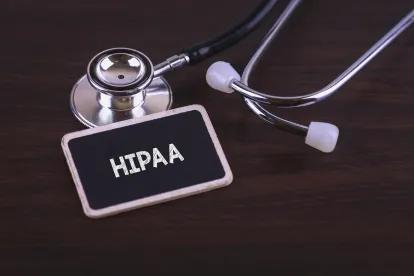In January, we posted about the Department of Labor’s (DOL or the “Department”) proposed rule to allow more Association Health Plans (AHPs) to be regulated as large group health plans. The proposed rule garnered national attention and the Department received over 900 stakeholder comments from consumer groups, individual employers, employer associations, health insurance issuers, business groups, and state regulators. Supporters of the rule emphasized the need for more affordable health care options while detractors raised concerns about the rule’s potential effects on the existing health care markets and the scope of coverage that will be available to individuals who enroll in AHPs.
On June 19, 2018, the Department finalized the rule, 83 Fed. Reg. 28912 (June 19, 2018) (codified at 29 C.F.R. 2510), with relatively few changes to the proposed rule.
- Like the proposed rule, the final rule broadens the definition of “employer” under the Employee Retirement Income Security Act (ERISA) so AHPs can meet the “commonality of interest” requirement by showing that their members operate in the same trade or industry or are located in the same geographic area. As a result, it will be easier to form an AHP, and AHPs based on trade or industry will now be able to offer group health plans across state lines.
- The final rule generally preserves the proposed rule’s requirements for an AHP to be considered a “bona fide group or association.” However, the final rule clarifies that although the primary purpose of the group or association may be to offer and provide health coverage to its employer members and their employees, the group or association also must have at least one substantial business purpose unrelated to offering and providing health coverage or other employee benefits to its employer members and their employees.
- The final rule expands the proposed rule’s position on allowing workers and their families to participate in AHPs by eliminating the requirement for these individuals to be ineligible for any other employer-sponsored group health plan.
- The final rule clarified that it functions as a separate and distinct pathway for AHPs to qualify as bona fide associations. Consequently, existing and new AHPs may form based on pre-rule guidance or the final rule’s parameters, and existing AHPs can continue to operate under existing DOL requirements.
Many stakeholder comments focused on concerns about oversight responsibility for newly formed AHPs. AHPs remain subject to state insurance laws or state laws that are specific to multiple employer welfare arrangements (“MEWAs”). Though the DOL, in the proposed rule, raised the possibility of using ERISA section 514(b)(6)(B) to exempt self-insured AHPs from certain state insurance laws, it declined to do so in this rule. Nevertheless, the Department did warn that it may use its power under 514(b)(6)(B) in the future “for preempting state insurance laws that go too far in regulating non-fully-insured AHPs in ways that interfere with the important policy goals advanced by this final rule.” 83 Fed. Reg. 28937.
AHPs will be subject to nondiscrimination requirements under the Health Insurance Portability and Accountability Act (HIPAA), as amended by the ACA, that prevent AHPs from conditioning employer membership on any employee health factor or from applying different eligibility rules or premium contribution rates to employers based on the health factors of an employer’s employees. Many commenters raised concerns that the nondiscrimination rules would allow AHPs to discriminate based on non-health factors such as age, gender, industry, occupation, and geography, which could serve as indicators of health status. This would likely allow AHPs to set premiums in such a way that would encourage healthy people to enroll while leaving sick people in the individual market. The DOL acknowledged these concerns, but declined to strengthen the proposed non-discrimination requirements. Instead, the final rule stressed that an AHP’s ability to discriminate based on non-health factors is “subject to state regulation.” 83 Fed. Reg. 28928.
Immediately following publication of the final rule, the attorneys general for New York and Massachusetts announced that they would sue the Trump administration to prevent the final rule from taking effect. They argue that the rule violates the Affordable Care Act, and that it will “invite fraud, mismanagement, and deception” and will “lead to fewer critical consumer health protections.”
Barring successful litigation, the rule becomes effective on August 20, 2018, but the Department has established an applicability date of September 1, 2018, for fully-insured AHPs, an applicability date of January 1, 2019, for existing self-insured AHPs complying with the pre-rule test, and an applicability date of April 1, 2019, for new self-insured AHPs formed pursuant to the final rule.
Nick Pastan also contributed to the post.




 />i
/>i
